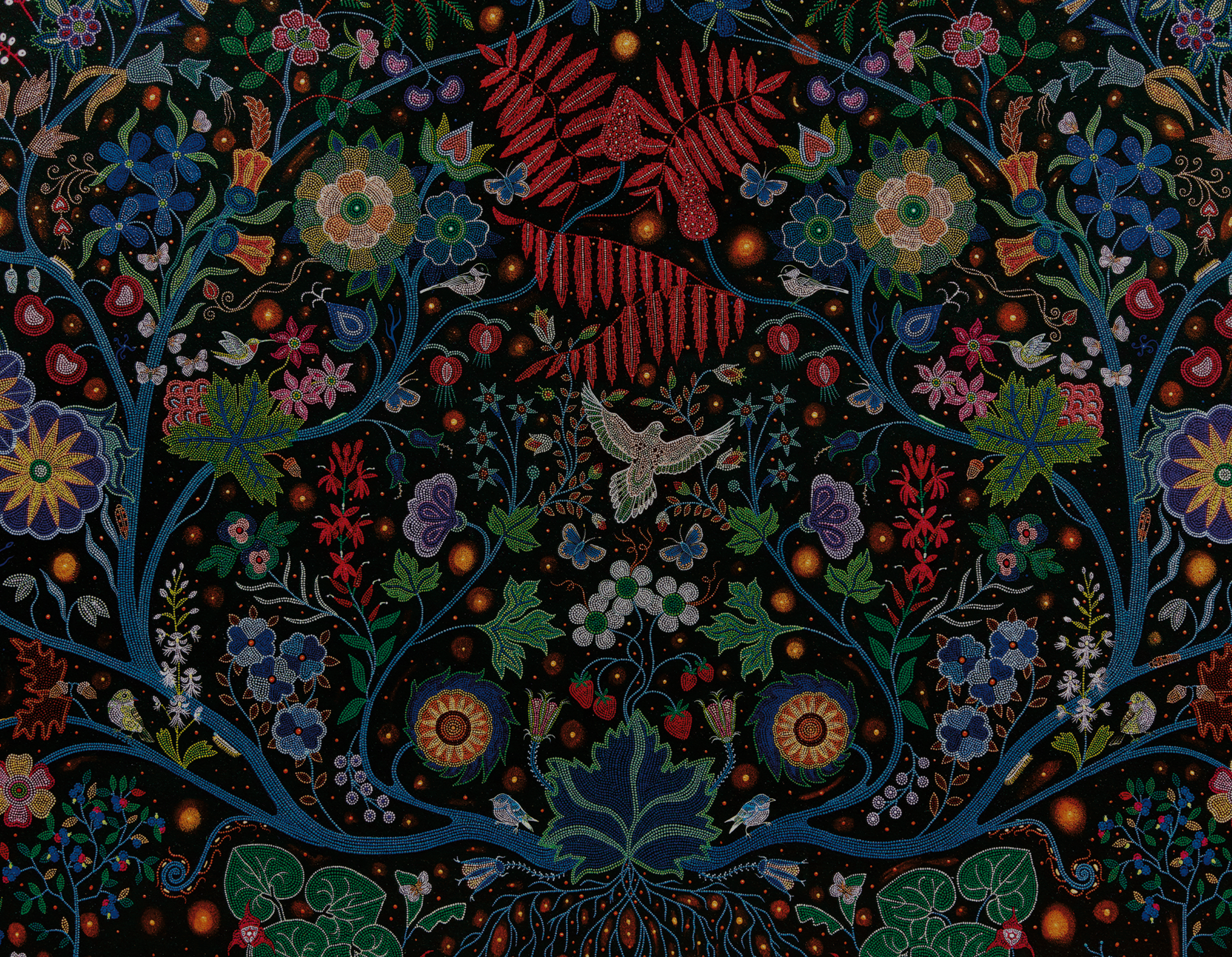The Wisdom of the Universe
Christi Belcourt
2014About the study guide
This easy to use guide has been thoughtfully created to assist teachers with their curriculum and lessons.
Download Study GuideAbout the study guide
This easy to use guide has been thoughtfully created to assist teachers with their curriculum and lessons.
Download Study GuideAbout the artwork:
The Wisdom of the Universe (2014) was commissioned by the Art Gallery of Ontario (AGO). This large work depicts species of plants and animals listed as threatened, endangered, or extinct in Ontario. You can find surprising details upon close viewing. Belcourt's signature dots - of which there are an estimated 250,000 - bring the artwork to life. She uses the bead, an object insignificant in size and simple in design, as the foundation of her art.
About the artist:
Christi Belcourt (b. 1966) is a Michif (Métis) artist, author and activist who has become best known for large-scale acrylic paintings featuring thousands of painted dots emulating Métis Beadwork. Her Métis ancestry originates from the historic Métis community of Manitou Sakhahigan (Lac Ste. Anne, Alberta.)
Please preview the short film and then share it with your students. Select one or two guiding questions that reflect your curriculum and can guide student research and inquiry connected to the artwork, artists, and the socio-cultural context in which it was created.
Guiding Provocations:
- How has Belcourt centred Indigenous perspectives and challenged colonization and climate justice?
- How does Belcourt explore concepts of interconnectivity in her artwork?
- How can art making and artworks promote renewal and healing in First Nations, Métis, and Inuit communities as well as reconciliation and dialogue with non-Indigenous communities?
- Is it significant that Belcourt uses both Métis and Western artmaking techniques? Or that it is often exhibited in traditional galleries but has also appeared in government institutions and European runways?
- The work is symmetrical - almost. Upon close viewing, how do disruptions of symmetry communicate meaning?
- In what ways is Canadian identity tied to our relationships with First Nations, Métis, and Inuit communities? To the land? To our non-human relations?
- How does Christi Belcourt uphold or push the role of artist?
- How might you represent your relationship to land through an artwork, dance composition, dramatic scene, or original song?
- How might you represent the relationship between several plants and/or animals (ecosystem) through an artwork, dance composition, dramatic scene, or original song?
- This painting reflects Belcourt’s worldview. How does that contrast with your own worldview? Can you use an artwork, dance composition, dramatic scene, poem, or original song to represent your world view?
- Create an artwork, dance composition, dramatic scene, poem, or original song to represent the concept of Interconnectivity.
